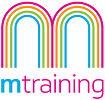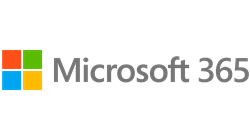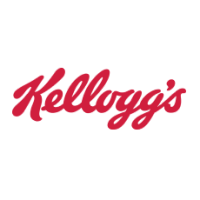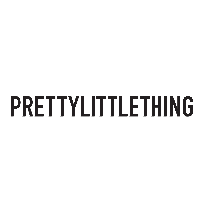SEO Jargon Buster 2021
WHAT COURSE ARE YOU LOOKING FOR?
-

SEO Jargon Buster 2021
15 Apr 2021One of the most common comments we get from delegates on our Digital Marketing and SEO courses is “there is so much jargon” or “there are so many acronyms”. So in this article, we are going to explain some of the most common terms that you will come across in the world of SEO.
It’s true, as an industry SEO (even that’s an acronym!) uses a lot of jargon like many industries do, but as more and more people are learning the importance of SEO and starting to dip their toe in its becoming apparent just how much jargon there is to learn.
Now; SEO is a big subject and the Jargon buster list below is not an exhaustive list nor is it meant to be a guide to implementing SEO; so it is not intended to be read from start to finish but more to be used as a reference.
There are many articles out there that go into each one of the terms shown here in more depth but here you will find the essentials terms in one place for quick reference.
This glossary will over time be updated and if you think we’ve missed anything let us know. (info@mtraining.co.uk).
We have tried to categorise the jargon as best we can, although there are lots of crossovers, so you can use the menu links to jump between categories or use the keyboard shortcut to get the find box to appear and search for the word you’re looking for.
On PC it’s CTRL F
On Mac is CMD F
If you're on mobile, go to the browser options and look for "Find On Page"
If you are still bamboozled, its time to go on our SEO Course for beginners

Search Engine Jargon
SEO / Search Engine Optimisation – The process of making changes to a website with the aim of improving the position of the website within the Organic results on a search engine results page
Search Engine - A search engine is a website that allows you to discover websites, articles, videos, images and more by searching for selected words. eg Google, Bing, Yahoo etc
Search Engine Results Page (SERP) – This is the resulting page of a search on a search engine that displays a list of websites, images, videos etc. that have been determined to be relevant to the search words.
Organic Results – The list of web pages displayed on the search engines results page that haven’t paid to be there.
Paid Results / Ads – The list of web pages that can appear at the top and the bottom of search engine results pages where the advertiser has paid - you will see 'ad' next to them.
Rank – The order in which the resulting websites etc. are displayed in the organic results on Search Engine Results Pages.
Bot/Spider – A small programme used by search engines to discover websites.
Crawl – The bots/spiders follow links to discover web pages, when it finds a page it analyses the page and then moves. This is known as crawling.
Cache – The cache of a webpage is how a search engine bot/spider “saw” your page when it was discovered.
Index – The search engine database where crawled versions of websites are stored. When you search on a search engine you are searching their database, not the live web.
Crawl Budget / Allowance – Search engines allow a certain amount of resource for each website.
Algorithms – Complex formulas that are used, by search engines, to judge a website/page based on topic, content, relevancy, authority as well as other metrics for it to appear in search engine results pages for specific search queries
Search Term / Query – The words entered by a user into a search engine to discover websites/pages in a search engine.
Listing – The area (or card) which displays the website
Title – The blue text that appears before a website’s URL (see below) This may also be called the Meta Title or Browser Title.
URL– This is the address of where a website is stored. It is displayed in search results, most commonly, above the title (in Google). It stands for Uniform Resource Locator
Snippet – A short bit of text that appears, most commonly, underneath the Title and URL. The aim of this text is to encourage click-through from the SERP and is usually pulled from the meta description (see On Page SEO Terms) or from content found on the page by search engines.
Sitelinks – Sitelinks are extra blue links that appear on a webpage listing.
Rich Snippet – Like a Snippet, a Rich Snippet is a small amount of information that is displayed along with your listing in SERPs, unlike a Snippet they are more visual and can take the form of Review Stars, Prices, Event listings, Recipes and more. They have no effect on the position of the listing but do take up more area and can increase the chance of a click-through.
Knowledge Graph Panel – This panel appears on the right hand side of SERPs and displays information regarding the search term. It is usually displayed only for Brands, Famous people or places, films, bands etc. Although limited knowledge graph information can be displayed for popular search terms.
Featured Answer – Some search terms may trigger an answer to appear in the SERPs above all organic listing.
Carousel – A carousel appears at the top of the SERPs above all listings, and shows a horizontal list or similar items.
Local Pack – A group of listings shown within a table with a map in the SERPs. This is shown if the search engine determines that the search query would benefit from local information.
People Also Ask – A group of Similar search terms (questions) people have asked related to the original search term. Appears as drop-down boxes within SERPs.
Related Searches – A list of blue links that usually appear at the bottom of the SERPs page of related search terms other users have made.
Zero-Click Search Results – This is when a user does a search and an answer to their query is given directly on the Search Engine Results Page as a result the user then doesn’t click on a listing.
Search Operators – These are specific words/characters that can be used in a search on Google along with normal search terms to narrow the results. There are around 40 search operators. Read our article about 5 useful Search Operators

Google Related Jargon
Google – The world's most popular search engine.
Google Analytics – This platform allows website owners to track how many users are visiting the website, where they have come from, what they did on the website and other metrics.
Google Search Console – This platform allows website owners to track technical information about their website, how Google has interacted with it and see information about traffic to the site. (used to be called Google Webmasters Tools)
Google Ads/Keyword Planner – This platform is used to create Pay Per Click ads that appear at the top of Google SERPs (as well as other websites). The Keyword Planner tool can be used for keyword research (See Keyword Research) to determine the popularity of search terms.
Google My Business – A platform that allows businesses to set up profiles that display address, opening hours and other business information. This is displayed in the knowledge graph & Local Pack results.
Google Algorithms (See Algorithm)
Penguin –The Penguin Algorithm looks at content quality and demoted sites with thin content.
Panda – The Panda Algorithm targets sites that acquire backlinks through schemes or payment.
Hummingbird – This core algorithm update’s purpose was to better understand semantic search, search query intent, and providing relevant rich results in the Search Engine Result pages.
Rank Brain – This is Google's Artificial Intelligence of search and is said to be the third most important ranking factor.
BERT – Bidirectional Encoder Representations from Transformers. This used to help Google better understand the context and intent of search queries
Core Web Vitals – A core update (for May 2021) to Google's algorithm, that focuses on factors relating to user experience and site speed. The main factors are:
- Largest Contentful Paint (LCP) – The time it takes the largest element to load
- First Input Delay (FID) – The time it takes for the site to respond after the first user input (e.g. link click)
- Cumulative Layout Shift(CLS) – The measure of how stable the page is as it loads i.e. does the content move around as the page is loading.
Ranking Factor – An element of a website that is used by search engines to decipher content topic, relevancy, and authority, as well as other metrics in order to position the webpage in the Search Engine Results Pages for relevant search queries.
YMYL – Your Money Your Life Pages – These are web pages that may impact a person's financial stability or health.
E E A T – Experience. Expertise. Authority. Trustworthiness – Google places more emphasis on these factors if a website falls on the YMYL scale.
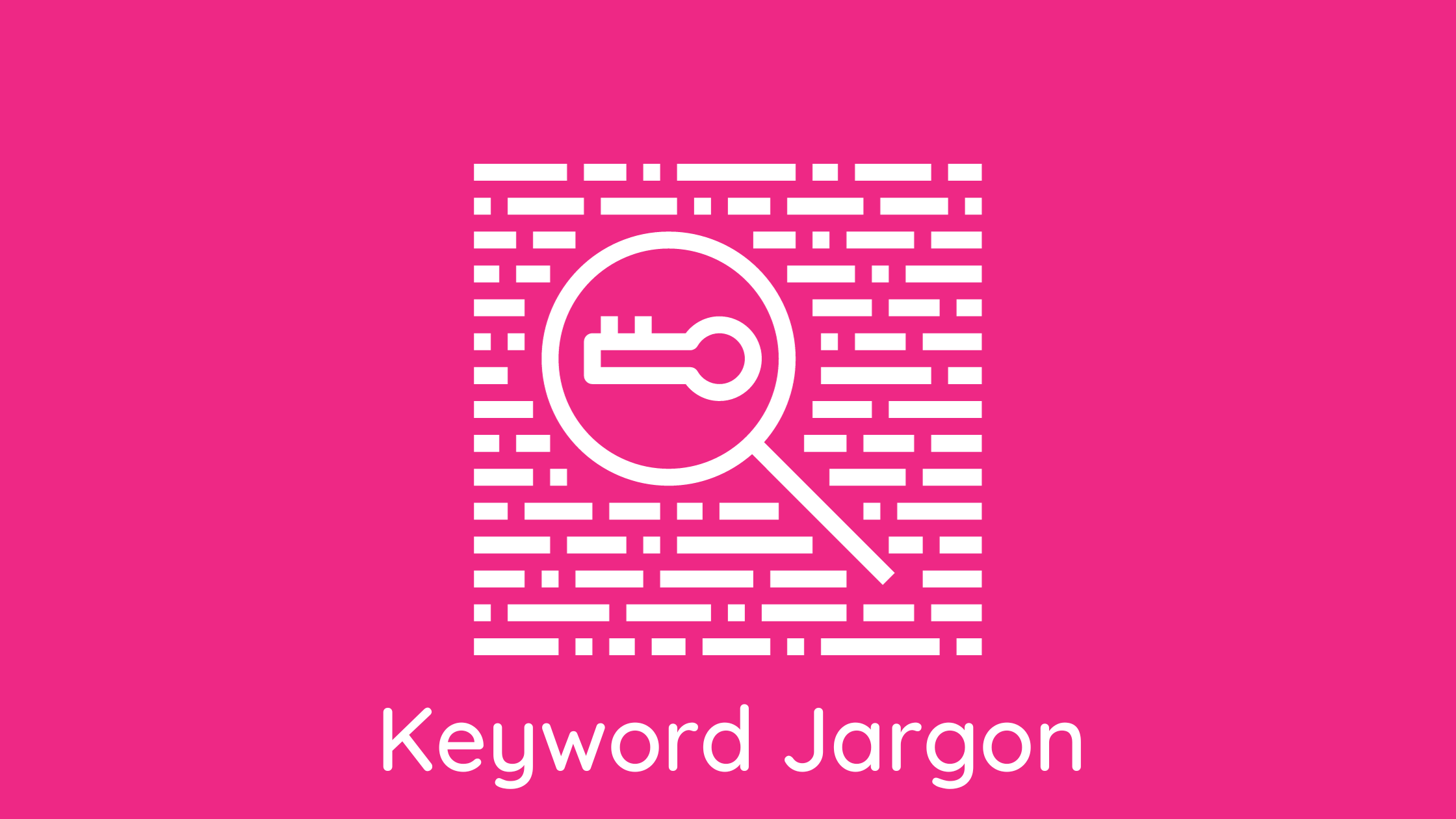
Keyword Jargon
Keyword / Keyphrase – A single word (keyword) or multiple words (keyphrase) that is targeted by websites. The aim of attributing keywords or phrases to a web page in order for the webpage to appear high in Search Engine Results pages for this term.
Keyword Research – The process which is undertaken to decide the keywords/phrases are targeted. The decision is usually based on a number of metrics, including but not exclusive to, search volume (see Search Volume), Click-through rate (See Click Through Rate / CTR), Difficulty or competition, and relation to the product or service being offered.
Keyword Variations – Variations of a keyword, such as spelling, plurals or synonyms.
Semantic Keywords – Keywords that are related to each semantically. Such as through the topic, variations of lexicon etc.
Keyword Difficulty – This is a measure of how competitive a keyword might be. I.e. A high difficulty keyword may mean that there are a lot of websites all trying to rank for this term.
Head Term – This is your main keyword for a page. It is usually a single word or a short phrase. For Example: SEO Course
LongTail Keyword – This is a phrase that is longer than just your head term. Longtail keywords generally have less search volume than Head Terms but are also less competitive. For Example: SEO Course in Manchester
Search Volume – How many times a specified keyword/phrase is searched for within a given time frame (usually monthly). This helps to indicate how popular keywords are.
Conversational Search – This is the way in which the user writes or dictates the search query. It is more apparent in voice search and is generally long tail
Search Intent (searcher intent) – The end objective of a search when they first search on a search engine or the objective of a user when they land on a webpage (i.e. research information or buying a product)

Onsite SEO / Technical SEO Jargon
Technical SEO - The process of optimising a website, usually, focusing on implementing or optimising the website code to aid search engines when crawling the website.
HTML – Hyper Text Mark-up Language – This is the code that forms the basic structure of a webpage. This includes all your text, images, links, title tag, meta description, and more, as well as things users cant see.
CSS – Cascading Style Sheets – This code is used to add styling to the HTML code above. Adding colours, position, fonts and much more.
JavaScript – A versatile coding language that is used within websites for numerous applications. Commonly for animated effects, or loading content.
Canonical Tag – Canonical tag is a line of HTML. The canonical tag is a way to reduce duplication by referencing a page to be indexed instead of the page on which the tag appears.
Page Speed – The time in which it takes a webpage to load.
AMP (Accelerated Mobile Pages) - These are pages designed to load ultra-fast on Mobile devices. Accelerated Mobile Pages are built on restricted versions of HTML, CSS and Javascript and are cached by Search Engines. When a user clicks on an AMP SERP listing they are delivered the cached version of the page rather than being taken to the live page.
Meta Robots (On Page Robots) These are used to control the indexation of a page. There are other directives that can be used in Meta Robots, but the most common use is to NoIndex a page that tells a Search Engine not to index this page so it doesn't appear in search engine results pages.
Robots.txt – This file is used to aid you in letting search engines know which pages or areas of a website they are not allowed to crawl. For example, you may not want your blog tag pages to be crawled so could block them in the robots.txt file. Do you have a robots.txt file? Try typing in your Domain then /robots.txt.
Meta Keywords – These are a legacy feature that used to be used in the early days of SEO. Search engines now no longer consider them.
CMS – Content Management System - This is the user-friendly backend of the website, where you can add text and images to pages and create new pages. Common CMSs are WordPress, Umbraco, Shopify and Magento.
HREF LANG Tags – The hreflang tags are used for international SEO purposes. If you have multiple websites for different countries, for example, domain.co.uk and domain.fr, using hreflang tags can help search engines to identify which country each website is for. So that the domain.fr is given priority in France and domain.co.uk is given priority in the UK.
Redirects – A redirect is a way of reducing duplication, removing pages, and maintaining the user experience. The idea is that when a user, or search engine, tries to go to Page A (which has a redirect in place pointing to Page B) they will instead see Page B and never see page A
Status Code – This is a code sent from the server in relation to the page it has returned. See below for some examples.
301 Permanent Redirect (also known as 301 Redirect) – A Redirect functions as detailed in Redirects. The status code 301 signals to search engines that this is a permanent redirect. Therefore Search Engines will pass through all page authority (See Page Authority) built upon the original page and search engine indexes updating with the new page in place of the old.
302 Temporary Redirect (also known as 302 Found, 302 Redirect) – Functions in the same way as a 301 redirect. But the 302 status code indicates to search engines for this to be treated as a temporary redirect. In many cases this will result in page authority NOT being transferred to the new page and the old page NOT being dropped from the search engine index.
HTML Sitemap – This is a page on your website that lists all pages intended for users. The idea is that a user can come to this page and get to any page they want with one click.
Sitemap.XML – This is also a sitemap but is intended for Search Engines, not users/website visitors. It should contain every URL you want to be indexed. This helps search engines to navigate around a website.
Structured Mark Up (also known as Structured Data, Schema Mark Up, Schema Data) – Structured Mark Up is a snippet of code (most commonly JSON-LD) that is implemented into the HTML of the website. Structured Mark contains information relating to the page it is found on. This information can be regarding various things such as Articles, Recipes, Events, Business Information, Product Information, and more.
The goal of Structured Mark Up is to help search engines better understand the content they find when crawling a webpage (and in turn better understand the internet). One of the main outcomes of Structured Mark Up is the occurrence of Rich Snippets in SERPS.
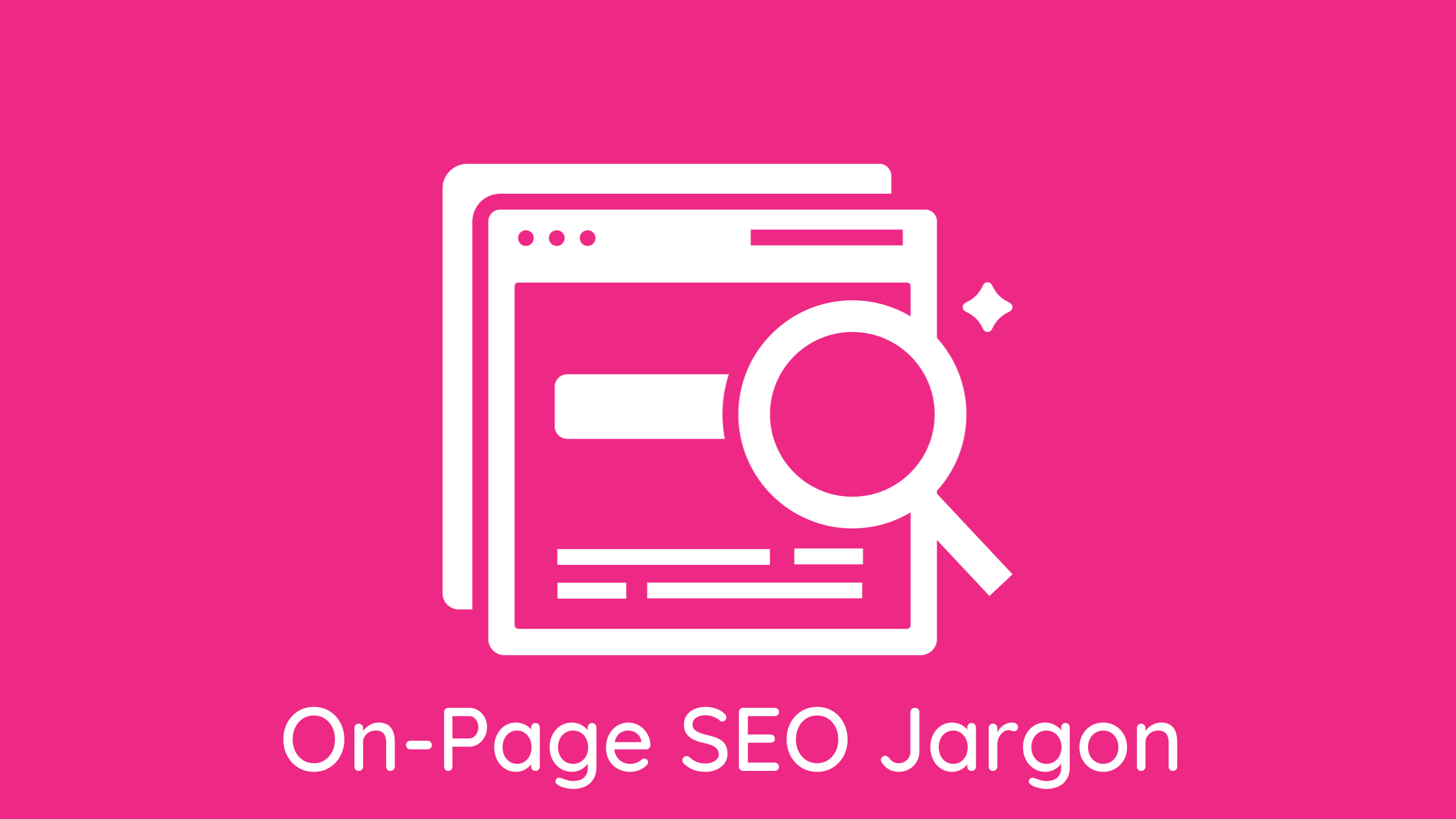
On-Page SEO Jargon
On Page SEO – The process of SEO mainly focussed on optimising the content that appears on a website and is intended to help inform and convert users as well as providing search engines information to aid ranking the page for specific keywords.
Word Count – The number of words of text that appear on the page. When referring to word this, usually, doesn’t include text that appears in navigation.
Link – Links are how pages are connected together, allowing users ( and search engines) to navigate around the website.
Anchor Text - The anchor text of a link is the text that is displayed on the webpage, it is the text that a user actually clicks on to navigate to another page.
H Tags (Heading Tags) Heading tags are used to break up the content on a web page. A H1 is the most important of the H Tags, there is also H2, H3, H4, H5 and H6, decreasing in importance. Heading tags help users and search engines to understand the content of the page. Although in recent times there has been much discussion around the importance of H tags for SEO purposes.
Title Tag (also known as Meta Title) - Title Tags are commonly referred to as one of the most important on page ranking factors. The title tag sits in the <Head> section of the HTML of the page, it doesn’t show on the page to the user, but appears in two places, the browser tab and as the Blue Text on Search Engine Results Pages. It has two main uses, helping the page to rank for keywords and to encourage users to click through from the Search Engine Results page.
Meta Description – The meta description, like the Title Tag sits in the <Head> section of the HTML of a webpage. It appears in the Search Engine Results Page under the Title. Unlike the Title tag it is not used by search engines for ranking but it’s main purpose is to encourage click-through from Search Engines.
ALT Text (also known as Alternative text) – Alt text is text that a webmaster can include to an image that is displayed on a webpage. The idea of Alt text is to describer the content of the image. The text is, generally, not visible to users but is used by screen readers for visually impaired users to describe the image. It is also used by search engines to help determine the image for indexing.
Blog – A blog is a part of a website, where the webmaster will upload content for users to read. These Blog posts are used to inform the reader but are also utilised for SEO purposes to target keywords and encourage backlinks to the website.
Content Hub – Usually similar to a blog, but focussed around a specific topic.
User-Generated Content (also known as UGC) – This is content on a website that has not been uploaded by the webmaster but instead, the users of the website. Examples of UGC are the comments section at the bottom of posts or a review section on a product.
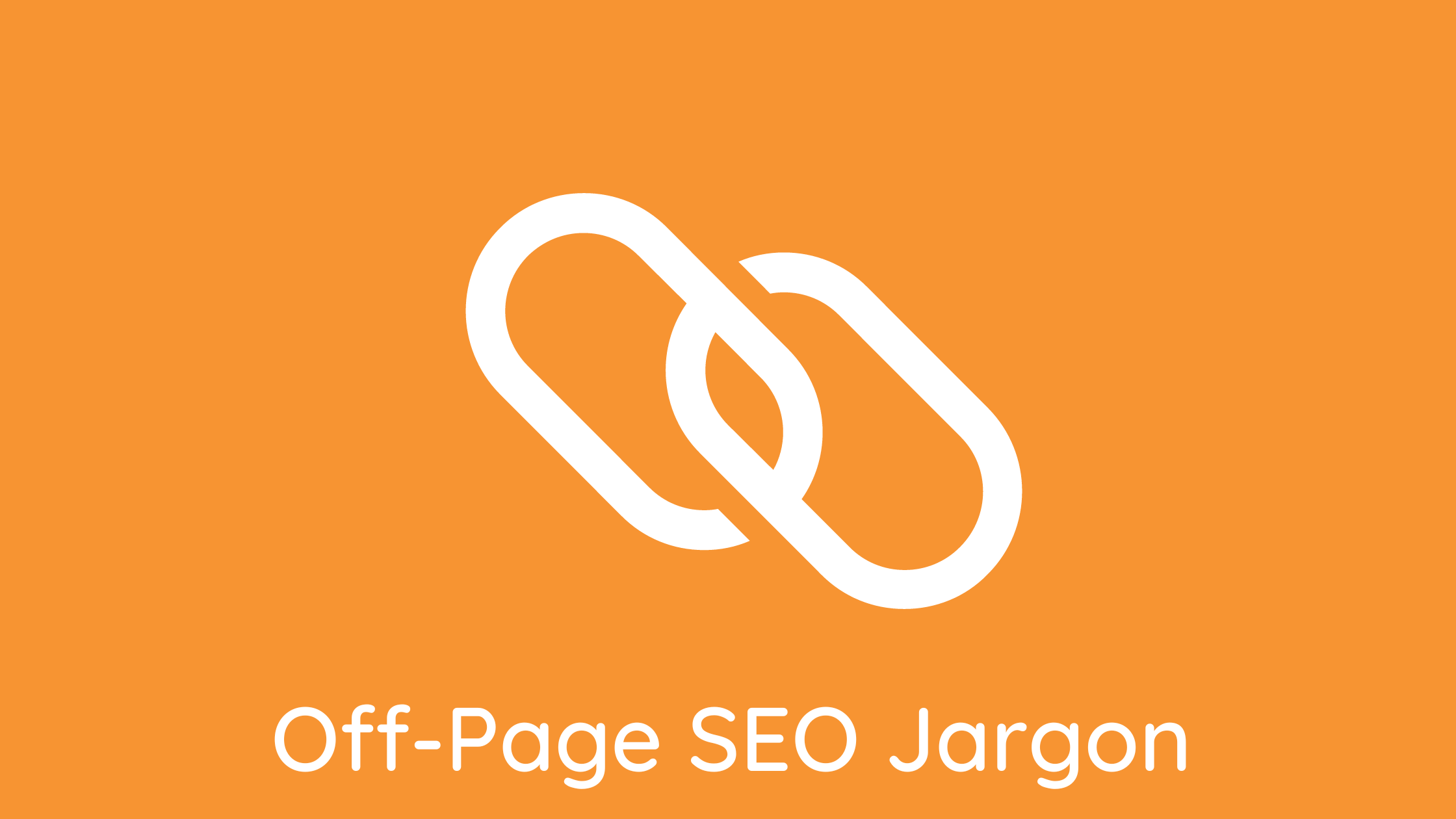
Off Page SEO Jargon
Off Page SEO (Off Page Optimisation): – This is the process you can take to impact your rankings within search engine results pages (SERPs) that are outside of your own website, primarily link building (see link building).
Backlink: - A link pointing from another website to your website. Backlinks are used by search engines to help determine authority and trustworthiness.
Anchor Text: The text that is used to create a link to a website, most commonly 'click here'
Referring Domains: How many other websites link to a website (rather than how many links point to your website)
Backlink Profile – A summary of all (or a sample of) backlinks pointing to your website. Metrics usually include quality of the website, Anchor text, link type and indexability.
Link Building – The process of trying to gain backlinks (building links) in order to positively benefit your own website in the view of search engines.
Domain Authority – The quality of a website. Usually proprietary metrics from a tool (Moz, AHrefs, Neil Patel etc) that indicate how good or trustworthy a website is.
Page Authority – As Domain Authority but focussed only on an individual page within the website.
Guest Blog – Writing a blog post on another website's blog. The end goal is to raise the writer's profile, increase traffic to their site, or gain a backlink.
Syndication - Where you create content on your website and then push that content out onto other websites, with Mentions and Links embedded.
Citation - Where content on your website is referenced within an academic type post/publication on another website.
Mention - Where your brand/organisation is mentioned on another website.
Social Metrics - The ranking factors that search engines use to determine how popular your content is on social media, such as are links to your website content being shared.
NAP: Name, Address, and Phone number. Search engines will scan the web to check these to validate a business.
Dofollow links: These are links that Search Engines spiders will follow and well be counted in your PageRank (see below)
Nofollow Links: These are links that Search Engine spiders are instructed not to follow by the webmaster. These will not be counted in your PageRank.
PageRank: This is the formula used by Google to determine the authority of a website/page. It is primarily based on the number of quality, relevant external links point to the website/webpage. It is a key off-page ranking factor.

SEO Reporting Jargon
Organic Traffic - visitors coming to your site from Organic Search results
Bounce – when a user visits a page on your website but leaves without any interaction
Bounce Rate – The percentage of visits that result in a bounce (see above)
Ranking Position – The position that your webpage is appearing in Search Engine Results Pages
Conversion – When a user achieves a set goal i.e. completes a form
Click Through Rate (CTR) – How often, usually as a percentage, a user clicks through to a website from the search engine results page after searching for a keyword.
Have we missed any? Let us know, drop us a line at info@mtraining.co.uk
Want to know about SEO? Take a look at our SEO Essentials Course
Related Articles
-
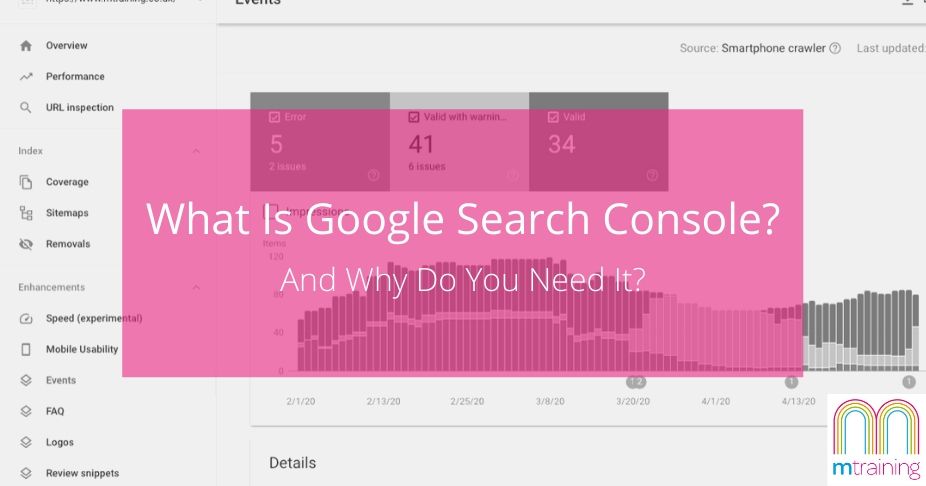
What is Google Search Console?
16 Jul 2020Heard of Google Search Console but not sure what it is or if you should use it? Take a look at this introduction to Search Console article.
Read More -
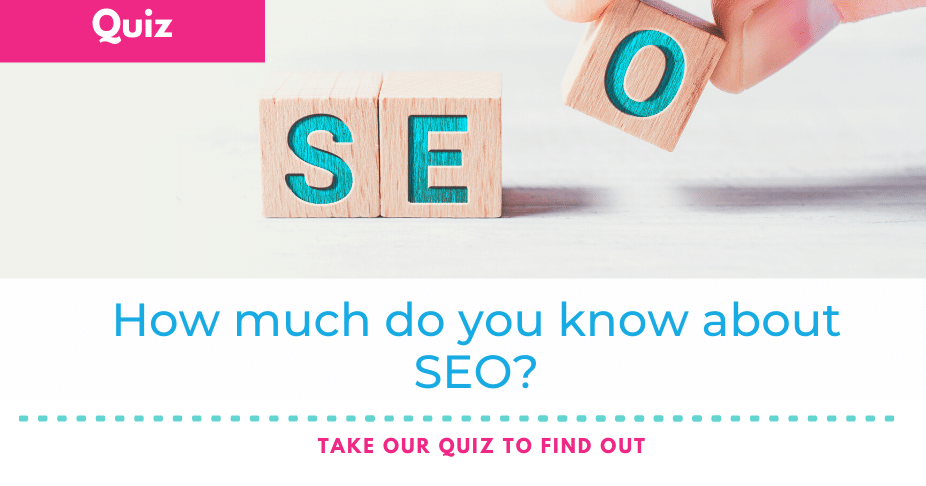
SEO Quiz 2020
24 Apr 2020Do you know your title tags from you meta descriptions? Test your knowledge with this SEO Quiz 2020
Read More
